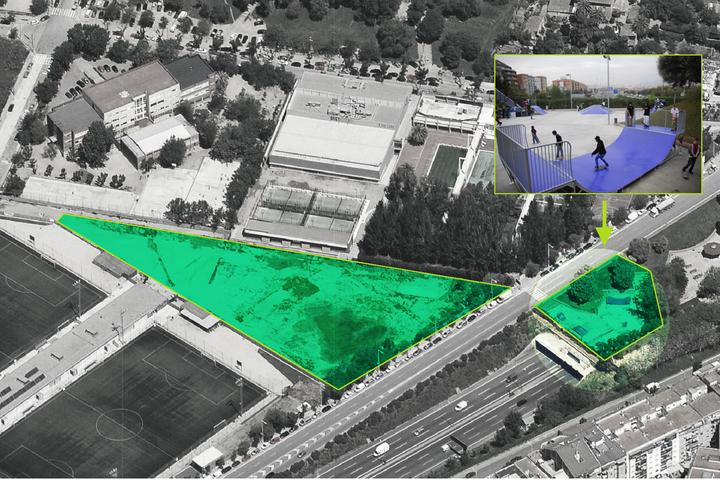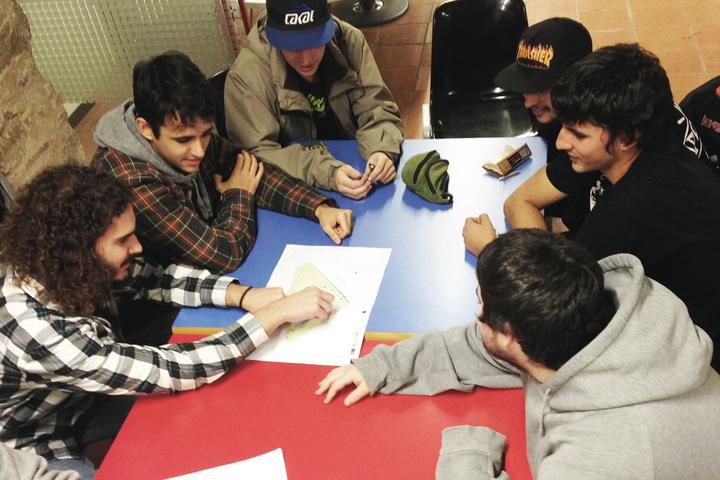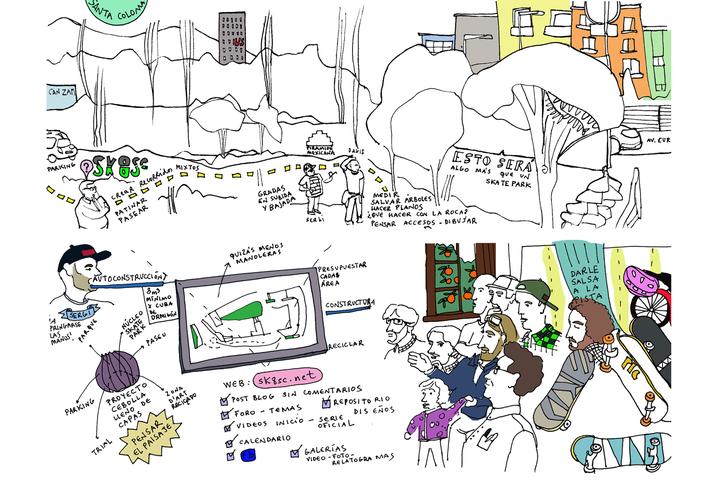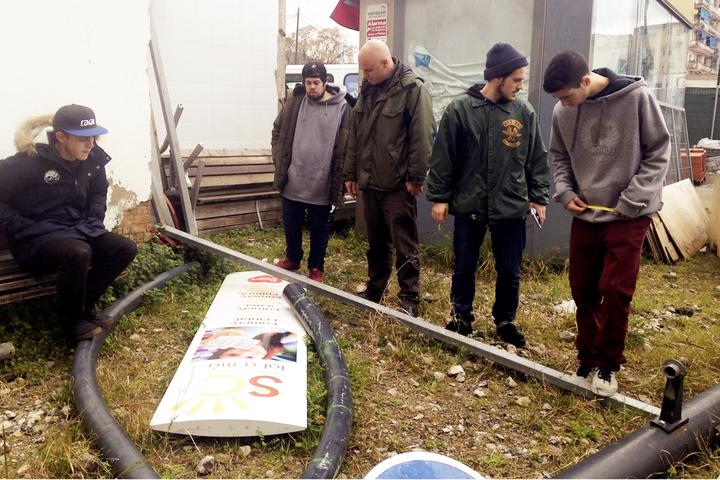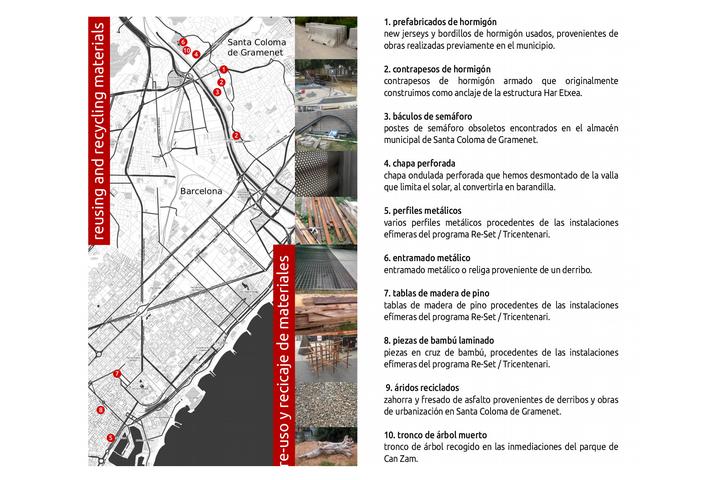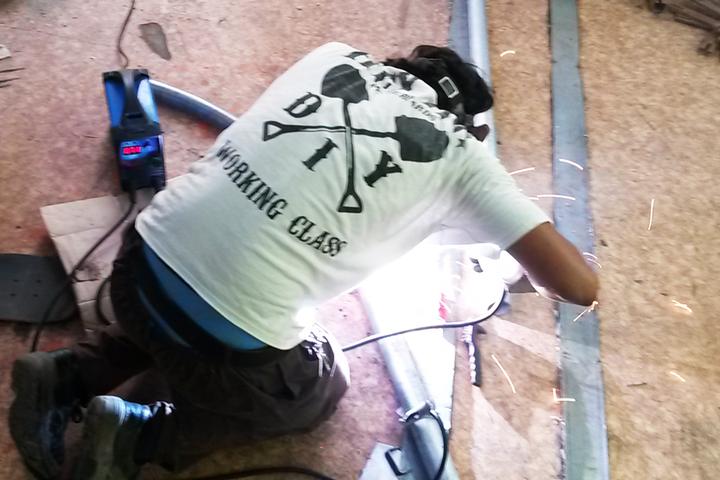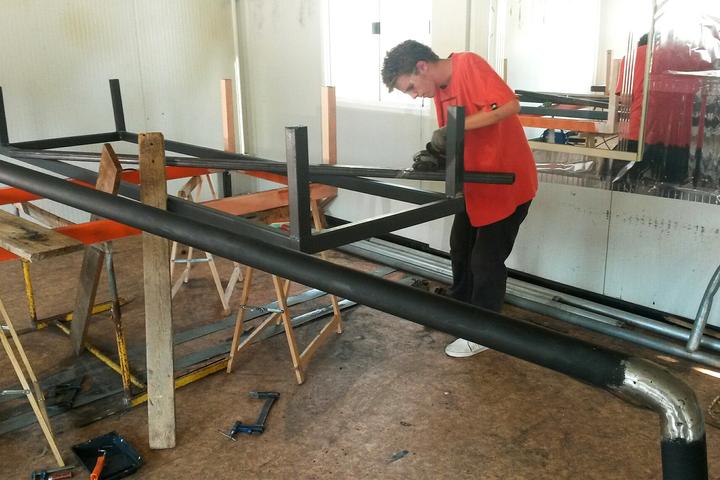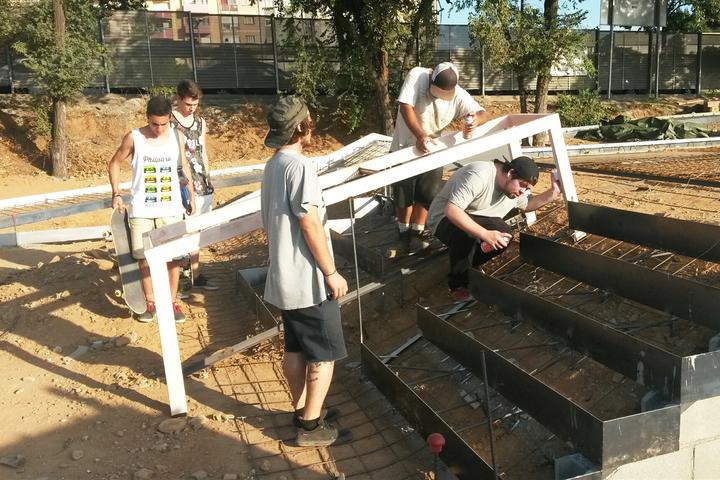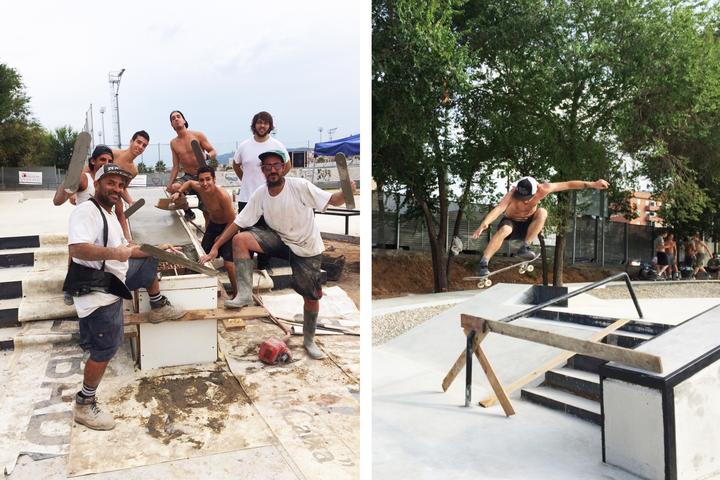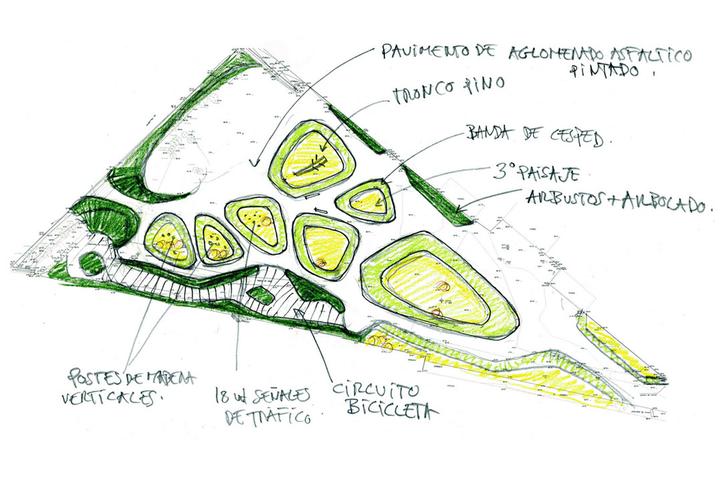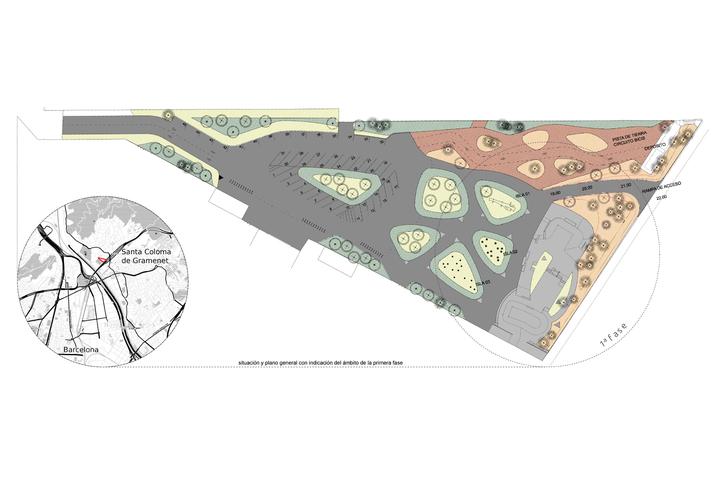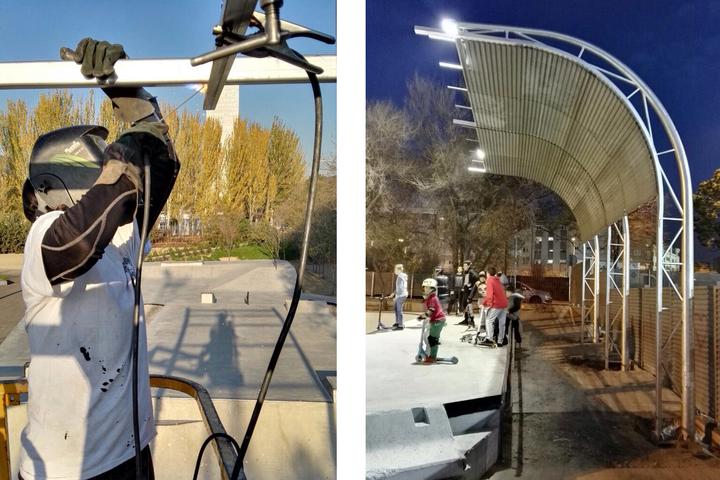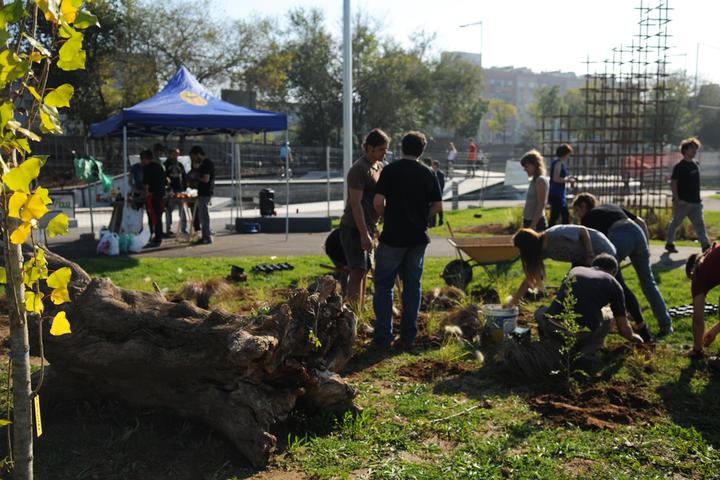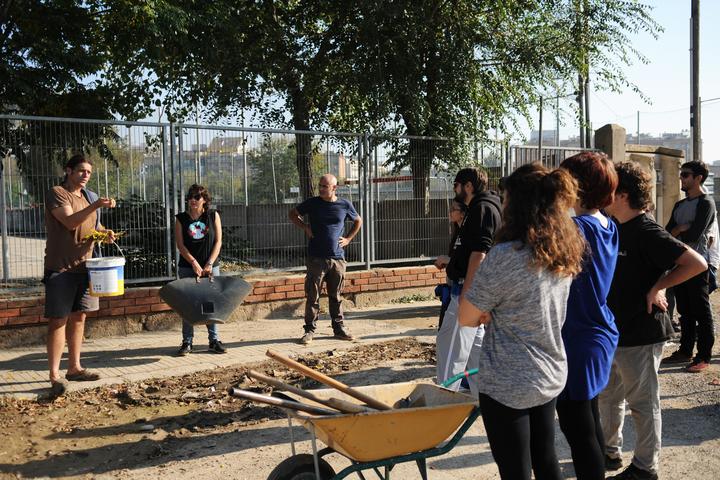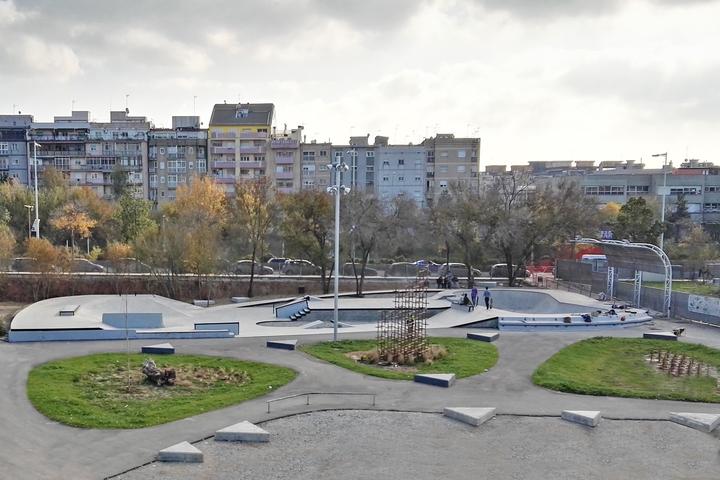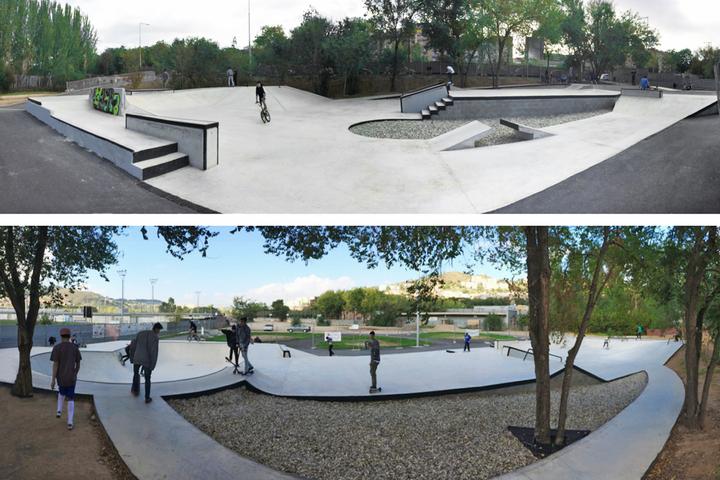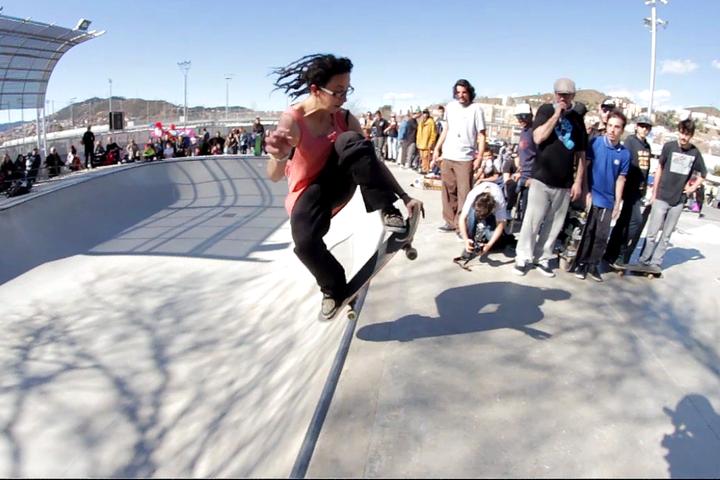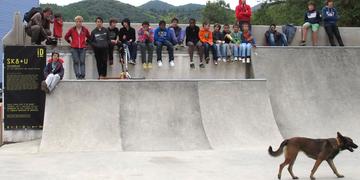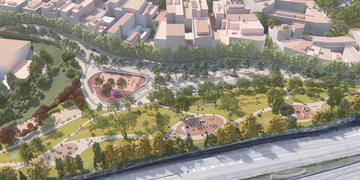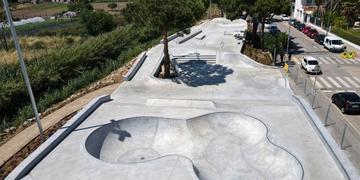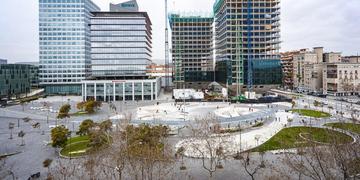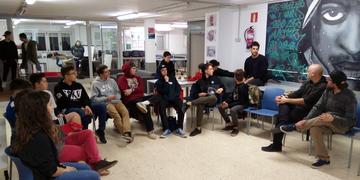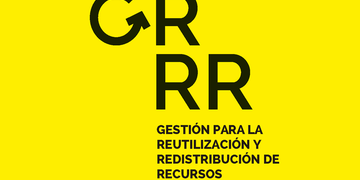La Santa
Urban Sports Park
Is there a better expert than the user? The project is born from the youth demand of a space adapted for urban sports. Almost a decade ago, in 2007, the youth of Santa Coloma demanded a space for skating from the town hall. The result was a small conventional skatepark executed on the cover of the B-20 highway, in Europa Park, next to Can Zam.
Let’s do it
Shortly after, this park proved to be insufficient. The skaters wanted larger and better areas, as well as to participate in its design. The city council responded to the request and offered skaters and bikers a plot very close to the previous park. The proposal was coordinated by Straddle3, and had the advice of skaters, the design of landscapers, and the ideas and workmanship of all users.
The triangular shape of the lot, with enough size to receive the program, was a residual space between different sports facilities which are part of the large public complex of Can Zam park. One of the ways in which the municipality is related to the riverbank of the Besós. The site was fundamentally barren, with the exception of an area populated by elms in its southern part and some buds of spontaneous vegetation.
The City of Santa Coloma, with the support of the Metropolitan Area of Barcelona, contacted Straddle3 to respond to the demands of young people. Straddle3 proposed a participatory process consisting of bi-weekly work sessions in a public facility. Skater Sergi Arenas and the Lur Paisajistak team was incorporated into the process.
These sessions established a framework of priorities that lead to a plan of uses for the park, which had to be resolved in different phases due to budget constraints. In meetings with the administrations involved, a methodology that goes well beyond the original assumptions of the project and the concept of citizen participation was developed.
It was then agreed to extend the participation in the development of the plan of uses and design to take it to the construction of the park itself. This establishes a mixed dynamic between infrastructural works and basic urbanization to be carried out by a contractor company, and another package of work to be developed by the management team and future users in the format of self-construction workshops.
Finally two deliveries are made: a preliminary project for the whole area and an executive plan for the first phase of the project.
The project that resulted from the participatory process includes a walking area, a skatepark, an outdoor gym, a bike park, as well as an area equipped for car parking. The first phase included the new pedestrian access to the area, a walking area and a multipurpose skatepark, suitable for the use by practitioners of various urban sports.
Emphasis is placed on the recovery of pre-existing trees, mainly elms, which are protected and complemented by the planting of poplars in the most humid and previously unpopulated areas of vegetation. The layout of the space is organized by means of islands that consist of a crown of grass, whose width corresponds to the sweeping of the irrigation diffusers. These islands are repeated in almost the entire area of intervention, although its configuration is diverse depending on the program.
Additionally, Iñigo Segurola from Lur Paisajistak and Straddle3 conducted a gardening workshop in which a very diverse group of people participated in. In this workshop, specimens of ditches and unused plots of land were recovered from the surrounding intervention zones, and they were transplanted to the plant beds of the new park. We can see that the way to recover plant elements from abandoned areas - what Gilles Clement calls "the Third Landscape" - does not differ from the way in which the constructive elements that make up the urbanized part of the recovered park.
One of the main conditioning factors of the project is the practice of self-construction together with the use of recycled material. This is because, on the one hand, in the skateable area with the use of metal profiles and second hand prefabricated concrete for the creation of obstacles. On the other hand, in the area of walk where the benches are developed from old counterweights of concrete, the islands are decorated with laminated bamboo (recovered from ephemeral installations) and the pergola-lamppost constructed from old traffic lights.
Let’s do it
Shortly after, this park proved to be insufficient. The skaters wanted larger and better areas, as well as to participate in its design. The city council responded to the request and offered skaters and bikers a plot very close to the previous park. The proposal was coordinated by Straddle3, and had the advice of skaters, the design of landscapers, and the ideas and workmanship of all users.
The triangular shape of the lot, with enough size to receive the program, was a residual space between different sports facilities which are part of the large public complex of Can Zam park. One of the ways in which the municipality is related to the riverbank of the Besós. The site was fundamentally barren, with the exception of an area populated by elms in its southern part and some buds of spontaneous vegetation.
The City of Santa Coloma, with the support of the Metropolitan Area of Barcelona, contacted Straddle3 to respond to the demands of young people. Straddle3 proposed a participatory process consisting of bi-weekly work sessions in a public facility. Skater Sergi Arenas and the Lur Paisajistak team was incorporated into the process.
These sessions established a framework of priorities that lead to a plan of uses for the park, which had to be resolved in different phases due to budget constraints. In meetings with the administrations involved, a methodology that goes well beyond the original assumptions of the project and the concept of citizen participation was developed.
It was then agreed to extend the participation in the development of the plan of uses and design to take it to the construction of the park itself. This establishes a mixed dynamic between infrastructural works and basic urbanization to be carried out by a contractor company, and another package of work to be developed by the management team and future users in the format of self-construction workshops.
Finally two deliveries are made: a preliminary project for the whole area and an executive plan for the first phase of the project.
The project that resulted from the participatory process includes a walking area, a skatepark, an outdoor gym, a bike park, as well as an area equipped for car parking. The first phase included the new pedestrian access to the area, a walking area and a multipurpose skatepark, suitable for the use by practitioners of various urban sports.
Emphasis is placed on the recovery of pre-existing trees, mainly elms, which are protected and complemented by the planting of poplars in the most humid and previously unpopulated areas of vegetation. The layout of the space is organized by means of islands that consist of a crown of grass, whose width corresponds to the sweeping of the irrigation diffusers. These islands are repeated in almost the entire area of intervention, although its configuration is diverse depending on the program.
Additionally, Iñigo Segurola from Lur Paisajistak and Straddle3 conducted a gardening workshop in which a very diverse group of people participated in. In this workshop, specimens of ditches and unused plots of land were recovered from the surrounding intervention zones, and they were transplanted to the plant beds of the new park. We can see that the way to recover plant elements from abandoned areas - what Gilles Clement calls "the Third Landscape" - does not differ from the way in which the constructive elements that make up the urbanized part of the recovered park.
One of the main conditioning factors of the project is the practice of self-construction together with the use of recycled material. This is because, on the one hand, in the skateable area with the use of metal profiles and second hand prefabricated concrete for the creation of obstacles. On the other hand, in the area of walk where the benches are developed from old counterweights of concrete, the islands are decorated with laminated bamboo (recovered from ephemeral installations) and the pergola-lamppost constructed from old traffic lights.

-
Project website
http://sk8sc.net/ -
Arquitectures intel·ligents
http://www.ccma.cat/tv3/alacarta/tria33/arquitectures-intelligents/video/5576115/
-
This content has no related downloads

